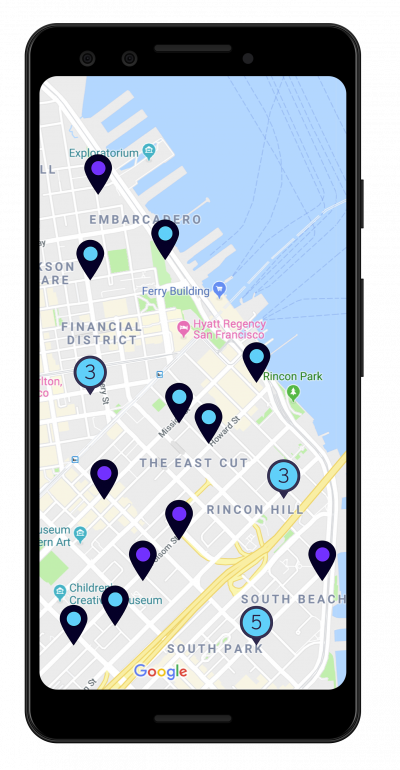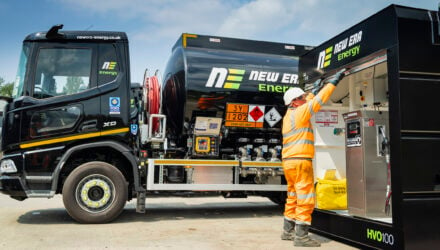The rapid growth of EV fleets will make a significant impact on helping the environment in the UK and globally. Road transport is responsible for close to 25% of total greenhouse gas emissions in the UK. Replacing fleets of internal combustion engine (ICE) vehicles with zero-emission vehicles will make significant strides toward meeting UK greenhouse gas targets and advancing overall adoption of EVs.

Choose an EV Fleet Management platform that provides tools for drivers, including a mobile app that helps them locate available charging locations while they are on the road.
While there are numerous types of fleets – corporate and ride-hailing autos, delivery vans and light-weight trucks, heavy-duty trucks, and buses – they all have one thing in common: EV fleet drivers are looking for a seamless charging experience and a vehicle that is always fully charged when and where they need it.
A software solution for EV smart charging and energy management is essential in optimising fleet utilisation, operations, and driver satisfaction. The right EV Fleet Management platform will enable fleet managers to save time, reduce costs, and keep vehicles on the road. At the same time, it must provide the flexibility and scalability required as the fleet grows. Here are four key capabilities to look for in an EV Fleet Management platform.
Integration of charging into seamless vehicle journeys
Successfully managing EV fleets requires that charging is seamlessly integrated with other systems used by operations for planning vehicle routes and availability. On the charging side, the platform must provide intuitive and easy-to-use tools that enable managers and drivers to plan for the entire vehicle journey, including all the possible charging options such as depot, at home or worksite, and in route.
Many new capabilities introduced with EV fleets must also be supported, such as back-to-home compensation to drivers charging at home, reservations for chargers with automatic assignment, support for roaming payment to other networks or fuel cards, and many other special uses cases.
Operational excellence and a stable charging environment
Installing charging infrastructure for a workplace or fleet depot is only the beginning – it is critical that the chargers in place are secure, functioning, and have enough energy available to charge vehicles when the driver arrives. EV fleet managers, or those providing services to them, need visibility into the health and availability of their charging network.
A management platform should offer a unified insights-driven dashboard, with features such as real-time 24/7 charger monitoring and control, advanced reports and analytics, alerts and notifications. By providing a clear view of charging operations and utilisation, it enables EV fleet managers and facility managers to ensure everything is working properly and ensure charger stability and availability.
Another capability essential to operational excellence is self-healing, which enables network issues to be identified and fixed remotely. We have found that up to 80% of operational-related EV charger issues can be solved proactively and automatically. This significantly increases network uptime and lowers maintenance costs. For problems that are not possible to be resolved automatically, such as hardware issues, the system will send customised alerts and notifications for issues which require onsite service.
Aside from properly functioning equipment, it is also important to utilise a hardware-agnostic platform. This allows for continued mix and match of the best charging hardware available in the market and use of existing legacy equipment. As the number of chargers grow by numbers, types, and charging speed, they should be supported by the platform.

EV Fleet Management portal should offer fleet operators and facility managers an easy-to-use dashboard.
Energy management optimisation
Energy management is another key dimension of an EV Fleet Management platform. Simply put, it is a type of power load balancer and optimiser for EV charging infrastructures. Its purpose is to optimise the charging infrastructure by efficiently monitoring, managing, and adjusting energy consumption, providing optimal demand response and cost. It is critical that this system be designed from the ground up to work with EVs and fleets, as the information and considerations for load balancing are different from other scenarios.
To achieve this, smart energy management must encompass the entire energy value chain from electricity generation and supply through the grid to the network that distributes power to chargers. The platform should use smart algorithms that automatically shift charging loads based on business requirements of the fleet and demand while balancing dynamic electricity grid and renewable supplies, dynamic energy costs, preconfigured policies and the needs of fleet vehicles.
Smart energy management also should support the integration of grid infrastructure with onsite battery storage and renewables like solar panels. Onsite batteries can be used to even out supplies and optimise energy costs. For example, during low-demand/low-cost periods from the grid or peak periods of availability from onsite renewable sources, energy can be stored in the batteries. This power can then be used to charge EVs during peak times.

An EV Fleet Management platform with smart energy management can optimize energy utilization to ensure vehicles are always ready when needed
Optimising fleet utilisation and fleet operations
Fleet operations must be top of mind when considering EV charging software and infrastructure. Fleet managers and facility mangers must have intuitive, easy-to-use and highly automated tools to manage the complex interactions of EV charging, energy management, and fleet operations.
Operations planning necessitates integrating the EV management platform with fleet legacy solutions, typically achieved with APIs. This includes schedule planning and other tools so fleet managers can create unified fleet schedules that encompass arrivals, departures, energy requirements, and work route mapping.
Incorporating these capabilities into a unified EV smart charging management platform and integrating it with existing tools will enable EV fleet managers to deal with the challenges of operating EV fleets efficiently.
As EV fleets and charging infrastructure continue to grow rapidly, fleet managers and facility managers can have the peace of mind that their vehicles will be charged when needed, with satisfied drivers. And that they are managing their operations optimally, now and tomorrow, and helping heal the world by realising the vision of an emissions-free transportation future.
Author: Doron Frenkel, Driivz CEO and Founder







